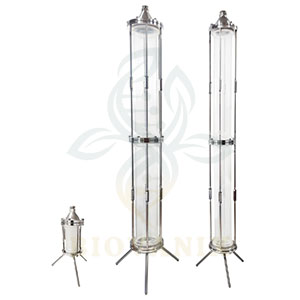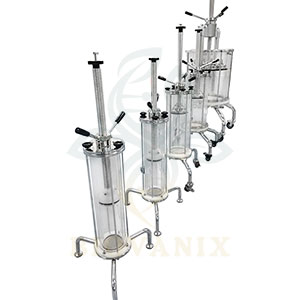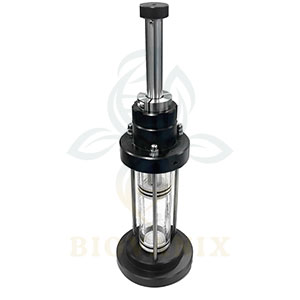Your Chromatography Solution
Selection For Low-pressure Liquid Chromatography Column
1. Define Application Requirements
- Separation Targets: Clarify the types of compounds to be separated (e.g., polar or non-polar) and the purpose of separation (analytical or preparative). For polar compounds, columns with specific stationary phases (e.g., amino or cyano) may be necessary.
- Scale of Separation: Select column size and capacity based on the scale of the experiment (e.g., micro-scale analysis or large-scale preparation).
2. Consider Column Types
- Standard Columns: Suitable for a variety of chromatography techniques, including gravity and low-pressure chromatography. Columns with stopcocks allow precise control of mobile phase flow rate.
- Jacketed Columns: Equipped with a water jacket for heating or cooling, ideal for temperature-sensitive compounds.
- Flash Columns: Designed for rapid separations, typically with larger diameters and shorter lengths, suitable for higher-pressure operations.
3. Choose the Appropriate Stationary Phase
The selection of the stationary phase is a critical step and should be based on the chemical properties of the target compounds. For example, non-polar compounds are best separated using non-polar stationary phases (e.g., C18), while polar compounds require polar phases.
4. Evaluate Physical Characteristics of the Column
- Inner Diameter and Length: These parameters affect separation efficiency and sample capacity. Columns with smaller inner diameters generally offer higher separation efficiency but lower sample capacity.
- Material Compatibility: Glass columns, typically made from borosilicate glass, provide good thermal stability and chemical inertness.
5. Assess Column Performance and Durability
Select high-quality columns that maintain good separation performance over multiple uses. The transparency of glass columns allows for visual monitoring of the separation process, aiding in method optimization.
6. Refer to Literature and Manufacturer Recommendations
Consult relevant literature or manufacturer guides to identify recommended column types and stationary phases for specific applications.







